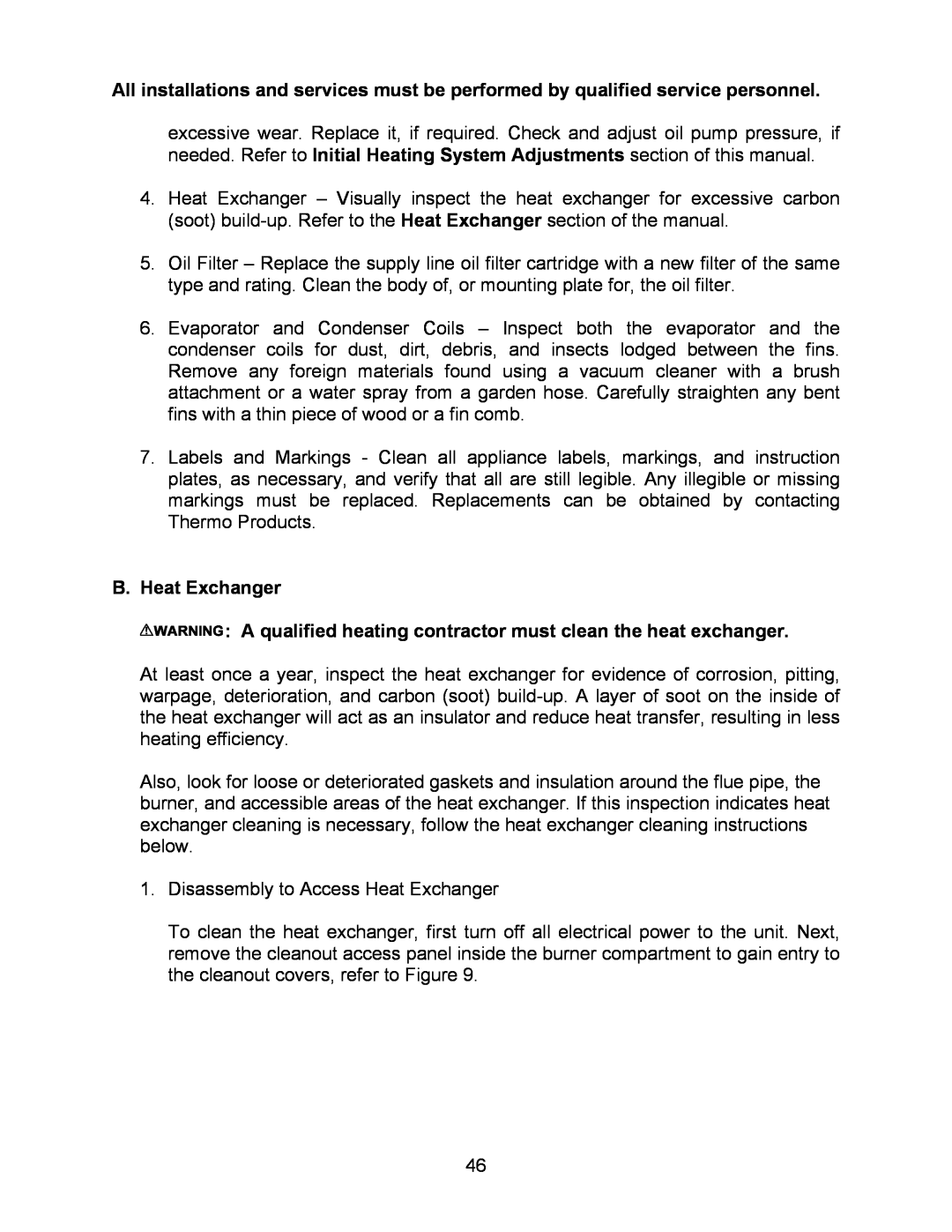All installations and services must be performed by qualified service personnel.
excessive wear. Replace it, if required. Check and adjust oil pump pressure, if needed. Refer to Initial Heating System Adjustments section of this manual.
4.Heat Exchanger – Visually inspect the heat exchanger for excessive carbon (soot)
5.Oil Filter – Replace the supply line oil filter cartridge with a new filter of the same type and rating. Clean the body of, or mounting plate for, the oil filter.
6.Evaporator and Condenser Coils – Inspect both the evaporator and the condenser coils for dust, dirt, debris, and insects lodged between the fins. Remove any foreign materials found using a vacuum cleaner with a brush attachment or a water spray from a garden hose. Carefully straighten any bent fins with a thin piece of wood or a fin comb.
7.Labels and Markings - Clean all appliance labels, markings, and instruction plates, as necessary, and verify that all are still legible. Any illegible or missing markings must be replaced. Replacements can be obtained by contacting Thermo Products.
B.Heat Exchanger
![]()
![]()
![]()
![]()
![]()
![]()
![]()
![]()
![]()
![]()
![]()
![]()
![]()
![]()
![]()
![]()
![]() : A qualified heating contractor must clean the heat exchanger.
: A qualified heating contractor must clean the heat exchanger.
At least once a year, inspect the heat exchanger for evidence of corrosion, pitting, warpage, deterioration, and carbon (soot)
Also, look for loose or deteriorated gaskets and insulation around the flue pipe, the burner, and accessible areas of the heat exchanger. If this inspection indicates heat exchanger cleaning is necessary, follow the heat exchanger cleaning instructions below.
1.Disassembly to Access Heat Exchanger
To clean the heat exchanger, first turn off all electrical power to the unit. Next, remove the cleanout access panel inside the burner compartment to gain entry to the cleanout covers, refer to Figure 9.
46
